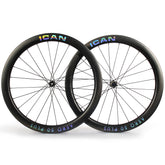tire pressure for racing bikes
Similar to Queen, bicycle tires are always under pressure. However, the question has changed recently: How much pressure is the right pressure? We all used to believe high pressure meant speed, now we all realize we were wrong.

So back to the actual task. We all know the pain of riding road bikes, the road chatter and the tiring bumps and bumps in the road. The reason we could feel all those impacts is because our tires wouldn't deform from the road debris. Our tires literally bounced off the road debris.
Now we would like to inform you that you can lower your tire pressure. For street we're thinking about 70-80 psi. At this pressure, your tires will deform around road debris. Although the deformation of your tire costs you energy, it is less than if your tires bounce off the road debris.
If you run 70 psi tubes, yes some people still do, you won't be at the constant risk of punctures and punctures. However, you will have a hold that you never thought possible before. The grip allows you to fly around corners without fear of slipping out. This alone must save you a lot of energy. Also, you are now flying out of corners, which means you have too much less acceleration. Because you don't have to accelerate as much, you save more energy. Do you recognize the pattern here yet?
If you take a quick look below, you'll see that we've put together a tire pressure guide. Don't worry about us being as precise as ever. Most track pumps will never be this precise. However, it's better to be in the stadium than just hanging around outside.

- Opt for a bikepacking tour and load your bike with lots of luggage. This is one of the few times when it's cool to turn up the pressure.
- If you buy puncture-resistant tires or a tire with a heavier sidewall, you should run lower pressures. Especially if you want to be comfortable.
- When you find new roads that are rougher than your normal routes. You want to lower the pressure on your tires to restore comfort.
One of the big problems was that the wheels heated up far too much on steep descents in summer. That's one of the reasons we worked hard on the brake rails for our new aero wheel range.

Our FL wheel series was already a leader when it came to heat resistance. Our FL series can withstand up to 240° and for our new Aero series we have managed to develop a brake rail that can withstand 300°. Now you may be wondering how my rims ever get so hot?
When you hit the brakes, you create friction between your brake pads and your wheel rim. The kinetic energy of your wheels is then converted into heat. The heat then travels through your fairing to your tire and then into the air in your tire.
The more you brake, the more heat is generated and the hotter the air in your tire becomes. When it's a hot day outside, it becomes harder to get rid of that heat and all parts of the body are hotter to begin with. You will also notice that the road temperature will magnify this as well.
Heat builds up inside your tire. As heat builds, the pressure in your tire also increases. You will find that this can cause heating that your tires, tube or rim can no longer cope with. We have worked hard to alleviate this problem as much as possible. However, you should take some precautions into account.
- On really hot days with big descents, lower your tire pressure by about 10 psi before departure, unless this value is below your tire manufacturer's guidelines.
- If you brake hard, stop and look at the view. After all, you're not racing. Give your tires and wheels a chance to cool down and have a drink too. On hot days it is important to drink enough fluids.
- Don't exceed 100 psi, it will slow you down and your ride won't be nearly as fun.





